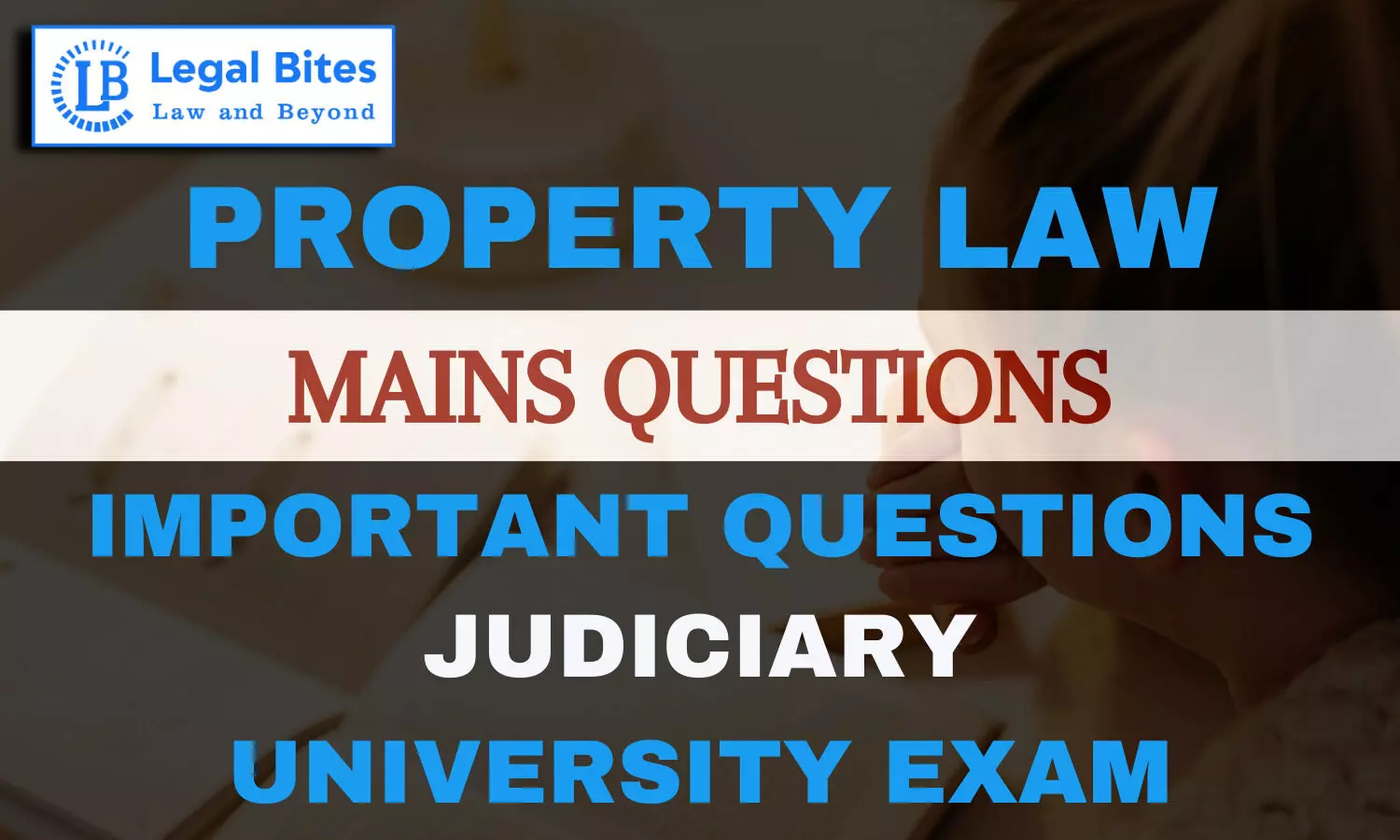Explain the doctrine of "Feeding the grant by estoppel" as recognized by the Transfer of Property Act.
Find the answer to the mains question of Property Law only on Legal Bites.;

Question: Explain the doctrine of "Feeding the grant by estoppel" as recognized by the Transfer of Property Act. [BJS 1977, 1978, 1979, 1986, MPJS 2019] Find the answer to the mains question of Property Law only on Legal Bites. [Explain the doctrine of "Feeding the grant by estoppel" as recognized by the Transfer of Property Act.]AnswerSection 43 of the Transfer of Property Act introduces the doctrine of "feeding the grant by estoppel". This doctrine addresses situations where a...
Question: Explain the doctrine of "Feeding the grant by estoppel" as recognized by the Transfer of Property Act. [BJS 1977, 1978, 1979, 1986, MPJS 2019]
Find the answer to the mains question of Property Law only on Legal Bites. [Explain the doctrine of "Feeding the grant by estoppel" as recognized by the Transfer of Property Act.]
Answer
Section 43 of the Transfer of Property Act introduces the doctrine of "feeding the grant by estoppel". This doctrine addresses situations where a person fraudulently or erroneously claims the authority to transfer a certain immovable property and proceeds to transfer it for consideration. The key provision of this section is as follows:
"Where a person fraudulently or erroneously represents that he is authorized to transfer certain immovable property and professes to transfer such property for consideration, such transfer shall, at the option of the transferee, operate on any interest which the transferor may acquire in such property at any time during which the contract of transfer subsists.
Nothing in this section shall impair the right of transferees in good faith or consideration without notice of the existence of the said option."
Section 43 of the Act introduces the doctrine of "feeding the grant by estoppel." This doctrine comes into play when a person, with fraudulent or erroneous intent, misrepresents their authority to transfer certain immovable property and proceeds to transfer it in exchange for consideration.
Section 43 applies to all kinds of transfers for consideration. It is important to note that this estoppel is distinct from the traditional estoppel, a rule of evidence. Instead, this form of estoppel affects legal relations and can lead to the creation of property interests.
Essentials
To invoke the provisions of Section 43, certain conditions must be met:
(1) The transferor must have made a fraudulent or erroneous representation that they had the authority to transfer the property, even if they did not possess such authority.
(2) The transferee must have relied on this representation and should not have known that the transferor lacked the necessary authority.
(3) The transfer must involve consideration, indicating that it is not a gratuitous transaction.
(4) The transfer should not be forbidden by law.
(5) The transferor subsequently acquires an interest in the property, which wasn't initially possessed.
(6) The contract must be subsisting and not cancelled.
(7) The transferee must exercise their option and request the transferor to fulfill the property transfer as per the contract.
(8) Another person should not have purchased the property for value without notice of the prior transfer.
In Ram Bhawan Singh v. Jagdish, [(1990) 4 SCC 309], the court observed:
when a person having a limited interest in the property transfers a larger interest to the transferee on a representation and subsequently acquires the larger interest, the larger interest passes to the transferee at the latter’s option. This doctrine not only applies to sales but also to a mortgage, lease, charge, and exchange. Where no grant or interest in immovable property is involved, the doctrine would not apply. The doctrine also does not apply in cases where the transferor has acquired interest not in the property which is the subject matter of the transfer, but in some other property.
In the case of Banwari Lal v. Sukhdarshan Dayal, AIR 1973 SC 814, the Supreme Court held that estoppel is typically a rule of evidence, except in cases like those governed by Section 43 of the T.P. Act. In such cases, estoppel can create an interest in the property regarding which the fraudulent or erroneous representation was made.
It's crucial to understand that this doctrine applies only to transfers of properties for value and not to gratuitous transfers. In the context of a gift, for instance, where the donor has no present fixed right in the property at the time of transfer, the provisions of Section 43 do not apply. In such cases, the transfer would be void under Section 124 of the Act.



